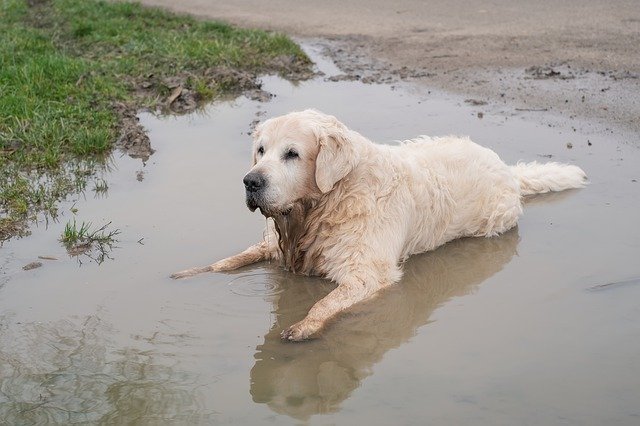 This is probably the vaccine about which I get the most questions when it comes to delays. Leptospirosis (aka lepto) is a regionally important and potentially life-threatening infection of dogs (and people) caused by serovars of the Leptospira bacterium. It’s generally considered a non-core vaccine, meaning it’s not needed for all dogs in all areas. However, it’s probably best considered a regionally core vaccine. If leptospirosis occurs where a dog lives or anywhere it to which that dog might travel, I consider this an essential vaccine. This disease is pretty widespread internationally, so that includes a lot of dogs.
This is probably the vaccine about which I get the most questions when it comes to delays. Leptospirosis (aka lepto) is a regionally important and potentially life-threatening infection of dogs (and people) caused by serovars of the Leptospira bacterium. It’s generally considered a non-core vaccine, meaning it’s not needed for all dogs in all areas. However, it’s probably best considered a regionally core vaccine. If leptospirosis occurs where a dog lives or anywhere it to which that dog might travel, I consider this an essential vaccine. This disease is pretty widespread internationally, so that includes a lot of dogs.
Lepto vaccines are killed vaccines, meaning they contain bits of the dead bacterium. Killed vaccines can be effective, but typically require multiple doses given within a specific interval to maximize immunity. For lepto, we typically start with two doses of vaccine 2-4 weeks apart, and then yearly boosters. We need that initial 2-4 week booster to make sure there’s a good immune response (unlike the modified live virus (MLV) core vaccines I mentioned in Part 1). If that 2-4 week booster is missed, we can’t assume there’s much protection or ability to respond to a future single booster shot. Also, yearly booster shots are needed for lepto to maintain immunity, unlike the core vaccines that can often be given every 3 years after the initial series.
Considering all that, if a dog is late for it’s first booster or annual shot, the default is to restart the entire series. The World Small Animal Veterinary Association vaccination guidance gives some leeway for the annual booster, indicating that re-dosing within 15 months (not the labelled 12) is likely okay. Personally, I suspect we can go longer, since the vaccines are good and immune systems usually aren’t dumb. However, the farther we go off-label, the less confidence we have. While many (or maybe most) dogs are probably protected well after a year and will still respond to a single booster, as a veterinarian, I can’t tell an owner with much confidence that that’s the case. So, the default is to go back to the start so we can be sure.
Based on that, when it comes to lepto vaccines, if a dog gets its:
First dose, but is late for the 2-4 week booster
- Restart the whole series (i.e. 2 doses 2-4 weeks apart, then yearly)
First dose, 2-4 week booster, and then a yearly booster not more than 3 months late
- Continue with the single annual boosters
First dose, 2-4 week booster, but is more than 3 months late for the yearly booster
- Restart the whole series (i.e. 2 doses 2-4 weeks apart, then yearly)
What if someone doesn’t want to restart the series (due to cost, logistics, not keen on vaccines, etc.)?
Odds are reasonable the dog will still respond to a single late booster, but confidence in the immunity this will generate drops the later the booster gets. There’s no way to say exactly what the risk is, so not going back to repeat that 2-4 week primary series means the owner has to accept some degree of uncertainly regarding how well protected their pet will be. Additionally, manufacturers tend to stand by their products, but they’re not likely to offer any support if a dog gets lepto when the recommended vaccine schedule isn’t followed. Those are all things that need to be discussed and considered.
I’d prioritize dogs for lepto vaccination in this order:
1a) Starting initial lepto series
1b) 2-4 week booster for dogs that received the first dose
2) Yearly booster for dogs approaching the end of the 3 month extension window
3) Yearly booster for dogs not yet near the 3 month extension window
More information about leptospirosis can be found on the Worms & Germs Resources – Pets page.









